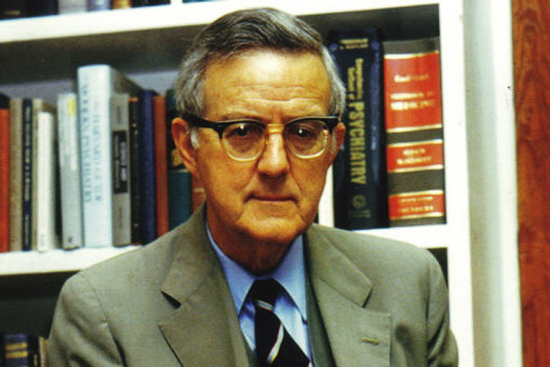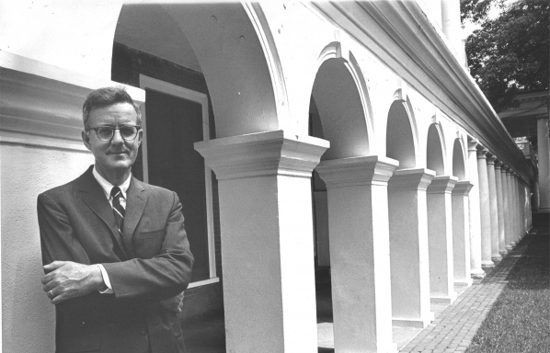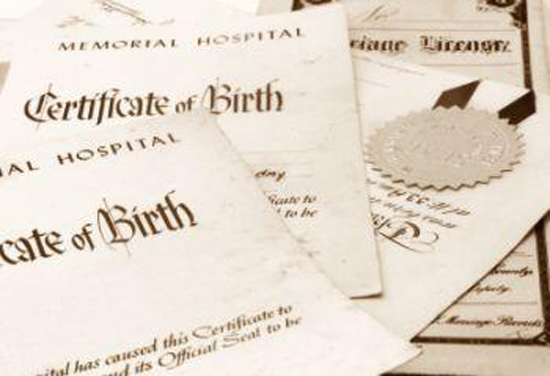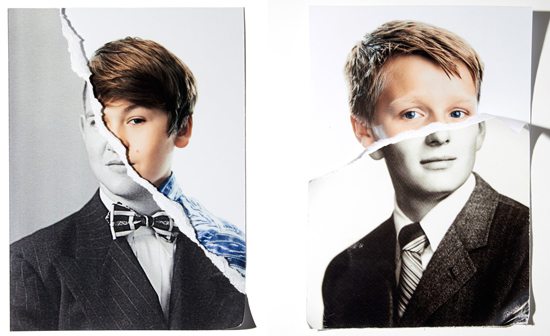Scientific Breakthrough Offers Proof That Reincarnation Exists (1)

One of the most respected collections of scientific data that provides proof that reincarnation is real belongs to the late Dr. Ian Stevenson – a Canadian-born U.S. psychiatrist who worked for the University of Virginia, School of Medicine, for fifty years, and chaired the department of psychiatry from 1957 to 1967.
Dr. Stevenson did not rely on hypnosis to verify that an individual had a previous life, but instead chose to collect thousands of cases of children who spontaneously remembered a past life.
Dr. Ian Stevenson used this approach because spontaneous past life memories in a child can be investigated using strict scientific protocols. Hypnosis, while useful in researching into past lives, is less reliable from a purely scientific perspective. In order to collect his data, Dr. Stevenson methodically documented the child’s statements of a previous life. Then he identified the deceased person the child remembers being, and verifies the facts of the deceased person’s life that match the child’s memory. He even matched birthmarks and birth defects to wounds and scars on the deceased, verified by medical records. His strict methods systematically ruled out all possible “normal” explanations for the child’s memories.
Dr. Stevenson had devoted the last forty years to the scientific documentation of past life memories of children from all over the world. He had over 3,000 cases in his files. Many people, including skeptics and scholars, agree that these cases offer the best evidence yet for reincarnation.
Dr. Stevenson’s credentials were impeccable. He was a medical doctor and had many scholarly papers to his credit before he began paranormal research. He was the former head of the Department of Psychiatry at the University of Virginia, and then Director of the Division of Personality Studies at the University of Virginia. He passed away on February 8, 2007.
In order to help the reader become familiar with Dr. Stevenson’s work, a Omni Magazine interview is offered below. Following the interview is a summary of one of Dr. Stevenson’s most famous cases.
The interview was published in 1988. It shows yet more of the many fascinating ideas and views that Dr. Ian Stevenson held, as he drew from his fifty years of education and research into the foundations of human personality.
Omni Magazine interview with Dr. Ian Stevenson
The idea that some children of age three to five not only remember a previous existence, but can identify loved ones from it, strikes most Westerners as so bizarre that it compels disbelief. Perhaps this is why the world’s foremost investigator of the phenomenon, Dr. Ian Stevenson, has attracted so little attention.
Since the late sixties, Dr. Ian Stevenson, Professor of Psychiatry and Director of the Division of Personality Studies at the University of Virginia, has documented cases in India, Africa, the Near and Far East, Britain, the United States, and elsewhere in which young children have astonished their parents with precise details about the people they claim to have been. Some of these children have recognized former homes and neighborhoods as well as still-living friends and relatives. They have recalled events in their purported previous lives, including their often violent deaths. Sometimes their birthmarks resemble scars that correspond to wounds that led, they claim, to their deaths.
All this is the stuff of lurid fiction and pulp journalism, presumably unworthy of serious investigation. In this context Stevenson is considered unique: his studies are scrupulously objective and methodologically impeccable. The late Herbert S. Ripley, former chairman of the psychiatry department at the University of Washington in Seattle, noted: “We are lucky to have someone of his ability and high integrity investigating this controversial area”. Dr. Harold Lief wrote in the Journal of Nervous and Mental Diseases: “Either he is making a colossal mistake, or he will be known as the Galileo of the twentieth century.”
Born in Montreal on October 31, 1918, Ian Stevenson was the son of a Scottish lawyer, John Stevenson. A writer at heart, the elder Stevenson became chief correspondent in Ottawa for Times of London. His wife, Ruth Preston Stevenson, had an extensive library on psychic phenomena. But Stevenson cannot recall any incidents that triggered his interest in psychic matters. “Virtually nothing has happened to me of that nature” he says. “I wish it would; I sometimes wonder what my trouble is”.
Stevenson studied medicine at the University of St. Andrews in Scotland and then transferred to McGill University in Montreal after the outbreak of World War II. His studies in internal medicine led to an interest in psychosomatic illness and then in psychiatry. Although he trained as a Freudian psychoanalyst, he now says: “I feel sure that Freud will one day be considered a figure of fun. After his first book, which was clinically based, he became involved in theoretical musings and practically lost interest in investigation. He ended up inventing an inverted cone of theory supported by a tiny base of data.”

In 1957 Stevenson was appointed chief psychiatrist at the hospital of the University of Virginia, and today (at the time this interview was first published – editor’s note) he heads the Division of Personality Studies. The author of many papers in professional psychiatric journals, Stevenson has written two standard texts on psychiatric interviewing and diagnosis. In 1964 he abandoned psychiatry to devote himself entirely to research into psychic phenomena and reincarnation. Buying time for his work took money. Luckily, Stevenson’s first essay on past lives, The Evidence for Survival from Claimed Memories of Former Incarnations, published in 1960, caught the eye of Chester Carlson, inventor of the Xerox machine.
Carlson promptly took the first major step toward funding the studies that Stevenson has been conducting ever since. Such studies are exhaustive as well as expensive. Between 1966 and 1971, for instance, Stevenson logged an average of 55,000 miles a year, often making return visits and interviewing as many as 25 witnesses for a single case. He now has 2,500 such cases on file from all over the world, most still unexamined for lack of money and researchers. Carlson, who died in 1968, endowed a chair at the University of Virginia, along with bequeathing the funds that still support Stevenson’s research.
Even decades ago, as he was finishing his first paper on memories of persons claiming previous lives, Stevenson saw the shortcomings of most evidence from adult cases. Focusing on the memories of very young children, he concluded that one might distinguish between “imaged” and “behavioral” memories. Although a child might have no conscious memories (imaged memories) from a former life, his interests, aptitudes, and phobias (behavioral memories) might have been formed by experiences he or she had forgotten. Perhaps reincarnation could explain features of the human personality that other theories have failed to elucidate.
Lately Stevenson has scrutinized evidence based on physical characteristics such as birthmarks and birth defects. This latest body of work, which will be published in several volumes over the next few years (referring to the time the interview was published, 1988 – editor’s note), Stevenson says, may tip the scales between evidence supporting reincarnation and evidence making any other conclusion difficult to sustain. All of Stevenson’s books have been published by the University Press of Virginia, and all are in print. They include Twenty Cases Suggestive of Reincarnation; Cases of the Reincarnation Type (four volumes); Unlearned Language: New Studies in Xenoglossy, and Telepathic Impressions. A Review and Report of Thirty-five New Cases.
For several years Stevenson declined the request to interview him, explaining that his reluctance stemmed from previous experiences in which he had been tricked by the press and badly misrepresented. Finally, in the fall of 1987, he relented, just before leaving Virginia for Cambridge, England, and then India. Stevenson and his staff work in an old house on a Charlottesville street that long ago lost its residential status and is now filled with parking lots and apartment buildings. The interior is comfortable and modern without being in any way memorable, except for the souvenirs of Stevenson’s travels, which line the walls: Indian and African masks, drums, fans, and swords. Now sixty-nine, Stevenson is a courtly and attentive listener with a reputation for being diffident. He is rather an intensely private person and, as might be gathered from the set of his jaw, secretly tenacious. Stevenson, it would appear, is much more concerned with painstakingly accumulating, clarifying, and classifying evidence than with drawing resounding conclusions.
Omni:
Your newest book [in 1988], Children Who Remember Previous Lives, is a rare discussion of the evidence presented, it seems, after much questioning. How does this book differ from your previously published books, which were predominantly case histories?
Stevenson: It occurred to me that my case histories were not being widely read – to understate the matter – although Twenty Cases Suggestive of Reincarnation has now become a best seller as far as scientific books go, it has gone into seven languages and has probably sold fifty thousand copies, but that’s over a twenty-year period. Judging from the mail, the readership was not among scientists but rather from the public at large. My paper The Explanatory Value of the Idea of Reincarnation, published ten years ago, suggested that the study of these cases might illuminate problems in psychology and medicine.

I had become dissatisfied, you see, with the methods that had been developed in psychiatry for helping people. Orthodox theory conceives human personality as the product of a person’s genetic material inherited from his ancestors through his parents, and the modifying influences of his prenatal and postnatal environment. But I found that some cases cannot be satisfactorily explained by genetics, environmental influences, or a combination of these. I am speaking of such things as early childhood phobias, about uncanny abilities that seem to develop spontaneously, of children convinced that they are the wrong sex, congenital deformities, differences between one-egg twins, and even such matters as irrational food preferences.
Omni:
Is this work the only study of its kind in the United States?
Stevenson: Yes, and it’s unique for the rest of the world. In India, however, scientists who have worked with me are now beginning to do independent research.
Omni:
Do you wait for people to get in touch, or do you pursue cases?
Stevenson: It’s sort of mixed now. I’ve got so much data I’ve been trying to withdraw from fieldwork myself. I want to write more so that not too many of my books will be posthumous.
Omni:
When did you hit on the idea of dealing just with children?
Stevenson: It evolved in the late sixties, probably after I went to India. Adults would write to me, and I eventually began to see that most of their cases were worthless. You can’t really control the subconscious influences to which most adults are exposed. It’s so much easier to be confident about the amount of information a small child might have learned, especially one living in an Asian village. I saw how fascinating and valuable these cases were.
Obviously children are too young to have absorbed a great deal of information, especially about deceased people in some distant town. In the better cases, they couldn’t have known about them. In many of our cases in northwest North America and Burma, people in the same family or village are involved. So there’s a likelihood that some adult or older child has talked about a deceased person and the child has absorbed the information, as our questioning makes clear. This is not, however, an issue in most cases I cite in India, many of which involve long distances, twenty-five to fifty kilometers or more, with no contact between the villages. Often the child has quite precise details.
Omni:
You’ve found children with intense interests in subjects having no relation to anything in their family background or up-bringing. And you’ve directly linked the phobias and addictions of children to traumas that transpired in the lives of people these children claim to have been. Are you talking about aspects of their personalities that heredity does not explain?
Stevenson: That’s right. It’s easy to see environmental influences, say, with such composers as Bach, Mozart, and Beethoven, all of whose fathers were fine musicians. But what about George Frederic Handel? His family had no discernible interest in music; his father even sternly discouraged it. Or take the cases of Elizabeth Fry, the prison reformer, and Florence Nightingale, the founder of modern nursing. Both had to fight for their chosen callings from childhood onward. One can find endless examples that are difficult to explain given our current theories. But if one accepts the possibility of reincarnation, one can entertain the idea that these children are demonstrating strong likes, dislikes, skills, and even genius that are the logical results of previous experiences. I have found some children with skills that seem to be carried over from a previous life.

Omni:
What about cases of childhood mental illness?
Stevenson: There again you will find cases of children acting as if they did not belong in their families. They treat parents and siblings with indifference, even hostility. This phenomenon is usually thought to have been caused by infantile trauma. Some theorists even try to explain it as the result of parents rejecting the child–before it has been born. Researchers look to the parents for the first cause. Comparatively little attention is given to the child, even though there is evidence that some children reject their parents before the parents have a chance to reject them. I suggest that such behavior could result from unhappy experiences in a previous life.
Omni:
What about one’s own child? Are there ways to introduce the subject?
Stevenson: I see no harm in asking a child if he remembers a previous life. I would be particularly interested if a child has a large birthmark or a congenital malformation. I’ve reported on a case of a child who claimed to have been his own paternal grandfather and had two pigmented moles in the same spots on his body that his grandfather did. It’s said in such instances that genetics is responsible. But one wonders why the one grandchild in ten who had the moles claimed to remember his grandfather’s life. Or take congenital malformations: Children born with deformed limbs–or even without fingers, toes, and hands–have claimed to remember being murdered and state that the murderer had removed these fingers, toes, or hands during the killing. In such situations the approach would be to ask the child to explain the birth defect. But I don’t approve of pumping children if they don’t want to talk.
Read the second part of the article
yogaesoteric
June 29, 2018
Also available in:
 Français
Français
